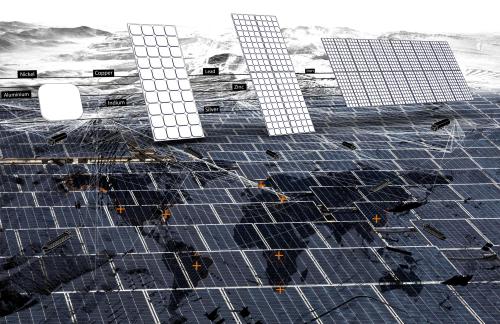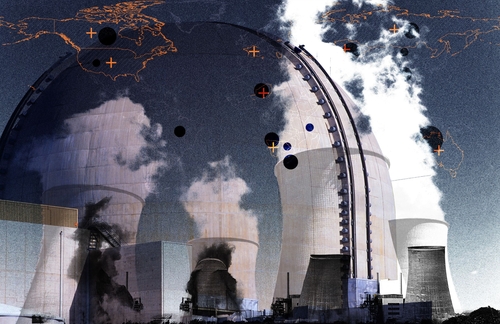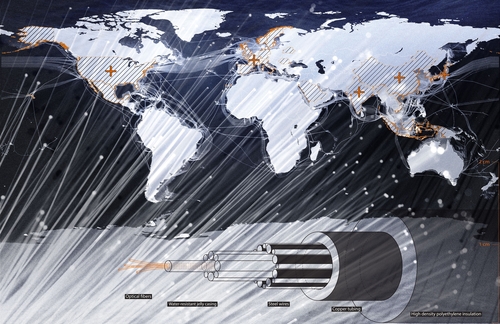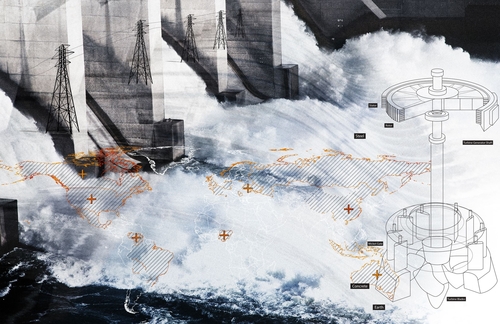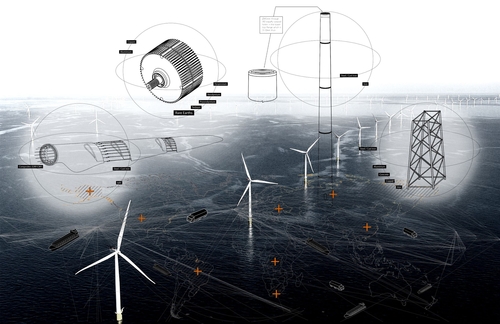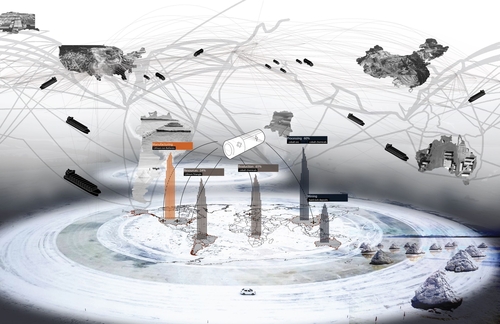The supply chain is an enduring global imaginary. It implies a linear, manageable, and reliable relationship between the sites where raw materials are mined, the factories and refineries where they are then processed, and the retailers and other outlets where the products they are used to create are delivered to consumers. Supply chains tell a story about how commodities are produced and delivered, how they move through and around the world. Yet, the rationalized system of extraction, production, and consumption that the metaphor of a supply chain implies does not actually exist. At its best, it is an accounting measure used by large retailers and industrial operators to manage vendors and displace costs and risks onto others. More often, the supply chain is a term used to obscure the otherwise unruly and cacophonous network of raw materials, labor, logistics, processing, and manufacturing required to keep modernity as the Global North understands it humming along.
As a conceptual and managerial tool, the supply chain emerged in the 1990s through the work of analysts at Walmart, JB Hunt, and other large retailers and logistics companies.
Conceptually, the supply chain is object-focused and reductive. It describes a set of discrete things and sites, linked together through highly sophisticated systems of control and surveillance that make it possible to track, say, a kilogram of lithium as it moves from a mine to processing facility to battery manufacturing plant to an electric vehicle and to one’s household.
These strategic gaps show that this way of imagining and managing the supply chain imaginary bears little resemblance to how things actually move through and around the world. Material flows are not so linear and neat; shipping and processing operations are not so easily managed. Disruptions are less a set of episodic shifts in the reliability and predictability of a supply chain and more a feature of the world’s robust-yet-fragile system of production, extraction, and just-in-time delivery and consumption. Things do not always move neatly and predictably from one link in a chain to the next through a set of closed-off pathways. Rather, things have a tendency to escape the boundaries of a supply chain, moving outward, upward, and otherwise well beyond the prescribed pathways of supply chain managers through unsanctioned, informal systems and sanctioned, transnational infrastructural systems alike.
Scholars of logistics like Deborah Cowen and Alexander Klose have shown how the knowledge structures underlying the supply chain concept emerge from the military histories of logistics.
The supply chain is not and never was the whole story. Having evolved, alongside business science, out of the field of military logistics in the 1960s, supply chains have always posed as manageable pathways of production, seductive in their clean, linear movement.
The deeper issue is epistemological–that is, it is a question of knowledge and how metaphors are built to describe the world–and concerns how we come to know our relationships, and how we operationalize that knowledge. To this end, Field Notes seeks to move beyond the concept of the supply chain, eschewing its linear alpha and omega, in favor of more dynamic concepts that can more readily address the practices of maintenance, repair, and care, which undergird, all too often invisibly, the miasma of messy relationships we call the supply chain.
This framework proposes a new topology to replace the chain as the dominant paradigm through which to understand global mobilities: the supply matrix. We use the term matrix because, unlike network, assemblage, or supply chain, a matrix can be multi-dimensional, while simultaneously implying a power structure holding it together; a matrix is a constructed and designed way of being and relating. Unlike a supply chain, in which analysis occurs largely in two dimensions (upstream to downstream), the supply matrix is volumetric, its characteristics informed by far more than just its nodes, edges, and paths. Relations are precariously placed along these nodes and edges by the power and political economy of resource supply chains [sic], but these relations are also indirectly influenced by the matrix’s other, less immediately salient attributes (such as scale, ideology, ecological feedback, etc.). What swims in the voluminous space between the nodes and edges, the bumpy and imperfect paths? Crucially, while the metaphor of the supply chain is object-focused (meaning, the perspective through which we understand the supply chain is that of the commodity and its movements through the linear space of extraction, production, and consumption), the supply matrix is relation-focused. It is not focused specifically on the commodity, but rather the relations that hold together the conditions for that commodity to move in the first place. This perspective places practices of labor, maintenance, and care in the foreground of this imaginary, emphasizing the importance of what Keller Easterling calls interdependent “interplay”, to the form and function of the larger supply matrix.
A supply matrix is a constantly shifting, semi-porous structure of processes that work through each other, oftentimes indirectly. Supply chains are like this too–hard to see, hard to describe, with indeterminate shapes. But in shifting metaphors from chain to matrix, the attention and visibility moves from objects to relations, which can help yield greater visibility to these obscure and seemingly ghostly processes. Attending to the indirect effects of these processes is essential to better understanding the multitude of ways commodities are touched and changed in their life cycles. Supply chains are rife with strategically unknown “unintended outsides,” but supply matrices attempt to cultivate and know these outsides.



